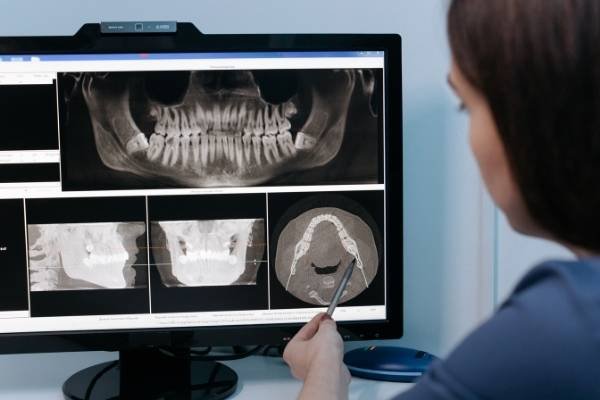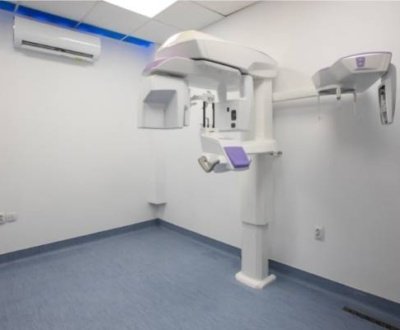Is teleradiology reliable when compared with conventional radiology?
- May 20, 2021
- Dental Teleradiology
When one talks about medical radiology or medical imaging it is always imagined as a process where a radiologist captures an image and does the interpretation. This was true until the 1990s where a conventional or rather a traditional radiology practice prevailed but later a completely new form was introduced called teleradiology, where images were captured at one place but interpreted by the radiologist in a different format at a different place.

Today we live in a so-called “Electronic or Digital era” where the transfer of any information between different time zones or any different geographical area is just a click away.
Teleradiology evolved in the 1990s but now with greater advancements it is becoming the new standard of medical imaging but conventional radiology, on the other hand, is still the gold standard of radiology.
The basic difference between both is the physical presence of radiologists on site. In conventional radiology, the radiologist is present at the site where the images are captured and analyzed whereas, in teleradiology, the images are captured at one place then transferred to the radiologist via electronic transmission, who does the interpretation remotely.
At the beginning of teleradiology, there was an overall lack of cost-effective digital image handling systems which slowed down the adoption of this approach but later with the advancements in the field of data collection and transmission teleradiology became easily accessible.
But to check whether it is reliable when compared with conventional radiology following factors need to be considered:
- Constant availability of radiologist – Teleradiology serves as a boon in emergencies when the radiologist is unavailable such as at night and radiological assistance is needed. In such a situation, though the radiologist is not present physically there is no delay in treatment because the virtual support is constantly available. A specific term used for such constant radiograph readers is the “Nighthawk” who works not only at night but also on weekends and other holidays to provide constant radiological support which is lacking in conventional radiology.
- Role of specialist – there are various subspeciality radiologists but the presence of all at once at a particular radiology setup is not possible but with teleradiology, this can be made possible. Whenever a specific specialist is needed, support can be provided from any part of the world through teleradiology.
- Usage of teleradiology for a second opinion- In some cases where a second opinion is needed, teleradiology can be very useful. The data can be shared between two or more radiologists through various sources irrespective of its volume and type and a better statement regarding diagnosis can be generated. This is a huge limitation for conventional radiology.
- Documentation for teleradiology – the data needed for teleradiology is completely paperless, the captured images can be stored in the server in different file formats thus makes the storage simpler and quicker.
- Time factor – with the usage of teleradiology higher volumes of radiographs can be managed in lesser time. Especially in the situations like the present one where due to the pandemic the volume of cases to be interpreted is high, in such cases, the higher volumes can be easily managed by outsourcing the data and bringing teleradiology into the picture.
Despite all these factors which favor teleradiology there is one big reason why conventional radiology cannot be completely ignored that is the physical presence of a radiologist in some radiologic procedures where it is a must such as “GI” barium study, USG guided biopsy or interventional radiologic procedures like abscess drainage.
But the proportion at which such procedures are done is very few as compared to the others where the physical presence of radiologists is not needed. Thus the advantages of teleradiology are far more than this one limitation, making it a reliable technique when compared with conventional radiology.
Especially in the present situation of pandemic, it can be helpful not only for the patients but for the radiologists. By practicing teleradiology a radiologist can provide his services while maintaining a safe distance which is helpful for both patients and the radiologist. Also, the high volumes of scans generated at one place can be managed easily with teleradiology without overburdening the radiologists present on site.
About us and this blog
We are a Dental Teleradiology service provider offering online interpretation and reporting of dental radiology studies like OPG, Cone Beam CT (CBCT), Dental X Ray, Sialography etc.
Request a free quote
Please let us know about your reporting requirements so that we can send you our service proposal customized to your needs.
Subscribe to our newsletter!
More from our blog
See all postsRecent Posts
- Importance of Oral and Maxillofacial Radiology in Dentistry July 1, 2021
- Dental 3D Scanning – A New Age Revolution June 30, 2021
- Looking After Your Oral Health in Festival Season June 16, 2021








